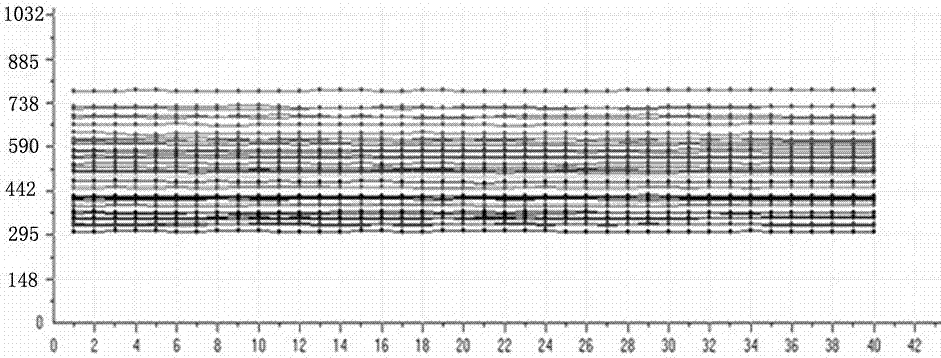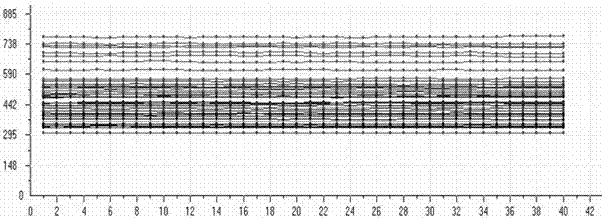Kit for jointly detecting respiratory tract pathogen through multiple fluorescent PCR method
A combined detection and multiple fluorescence technology, applied in the field of fluorescence quantitative PCR, can solve the problems of time-consuming and labor-intensive separation and culture, low sensitivity of immune detection, etc., and achieve the effect of improving the accuracy of medication, shortening the detection process, and clarifying the cause of the disease.
- Summary
- Abstract
- Description
- Claims
- Application Information
AI Technical Summary
Problems solved by technology
Method used
Image
Examples
Embodiment 1
[0032] 1. Preparation of the reaction solution
[0033] (1) Preparation of reaction solution A
[0034] Take a 10mL volumetric flask and add 0.5mol / L Trizma ® HCl 64μL, 0.5mol / L Trizma ® Base 336μL, 1 mol / L MgCl 2 25μL, 1mol / L KCl 600μL, 0.5mol / L EDTA·2Na 2μL, DMSO 100μL, dNTPs 90μL, 50μmol / L Influenza A virus upstream and downstream primers each 83.4μL, 50μmol / L Influenza A virus probe 25μL, 50μmol / 83.4µL of influenza B upstream and downstream primers each, 50µmol / L influenza B virus probe 25µL, 50µmol / L adenovirus upstream and downstream primers 83.4µL each, 50µmol / L adenovirus probe 25µL, 50µmol / L adenovirus Respiratory syncytial virus upstream and downstream primers are 83.4µL each, and 50µmol / L respiratory syncytial virus probe is 25µL. Make up the volume to 10mL with double distilled water, invert to mix thoroughly, transfer the liquid to a 10mL beaker, distribute 1mL / branch into centrifuge tubes, and store at -20°C for later use.
[0035] (2) Preparation of reac...
Embodiment 2
[0062] 1. Reagent specificity verification
[0063] (1) Experimental sample
[0064] 10 specific samples were taken to verify the specificity of the reagents, of which 4 were saline, 1 was human metapneumovirus, 1 was rubella virus, 1 was measles virus, and 1 was Klebsi pneumoniae Escherichia coli samples, 1 sample for Escherichia coli, and 1 sample for Staphylococcus aureus.
[0065] (2) Experimental process
[0066] Use reaction solution A, reaction solution B, and reaction solution C to detect the above 10 specific samples respectively, analyze the detection results, and verify the specificity of the reagents.
[0067] (3) Experimental results
[0068] All 10 specific samples tested by the three reaction solutions were negative, indicating that the reagents had good specificity and no cross-reaction. The specific results are shown in the table below:
[0069] Reaction solution A specific test results
[0070]
[0071] Reaction solution B specific test results
[0...
Embodiment 3
[0103] Example 3: Results of testing 120 clinical samples
[0104] 1. According to the preparation method shown in Example 1, the relevant components of the kit were prepared and stored at -20°C for later use.
[0105]2. The Wuhan Maternal and Child Health Hospital collected throat swab samples and sputum samples from 120 patients with clinical symptoms of respiratory tract infection, and used nucleic acid extraction reagents (viral type) produced by DoBeek Biotechnology (Xiamen) Co., Ltd. for nucleic acid extraction. , The purity of DNA samples was detected by UV spectrophotometer, and the OD260 / OD280 of 120 samples were all between 1.6 and 2.0.
[0106] 3. According to the steps shown in Example 1, add DNA samples and use a fluorescence quantitative PCR instrument for detection. The instrument used this time is ABI7500.
[0107] 4. According to the judgment criteria shown in Example 1, the results are interpreted and counted, and the results are as follows:
[0108]
PUM
 Login to View More
Login to View More Abstract
Description
Claims
Application Information
 Login to View More
Login to View More - R&D Engineer
- R&D Manager
- IP Professional
- Industry Leading Data Capabilities
- Powerful AI technology
- Patent DNA Extraction
Browse by: Latest US Patents, China's latest patents, Technical Efficacy Thesaurus, Application Domain, Technology Topic, Popular Technical Reports.
© 2024 PatSnap. All rights reserved.Legal|Privacy policy|Modern Slavery Act Transparency Statement|Sitemap|About US| Contact US: help@patsnap.com










